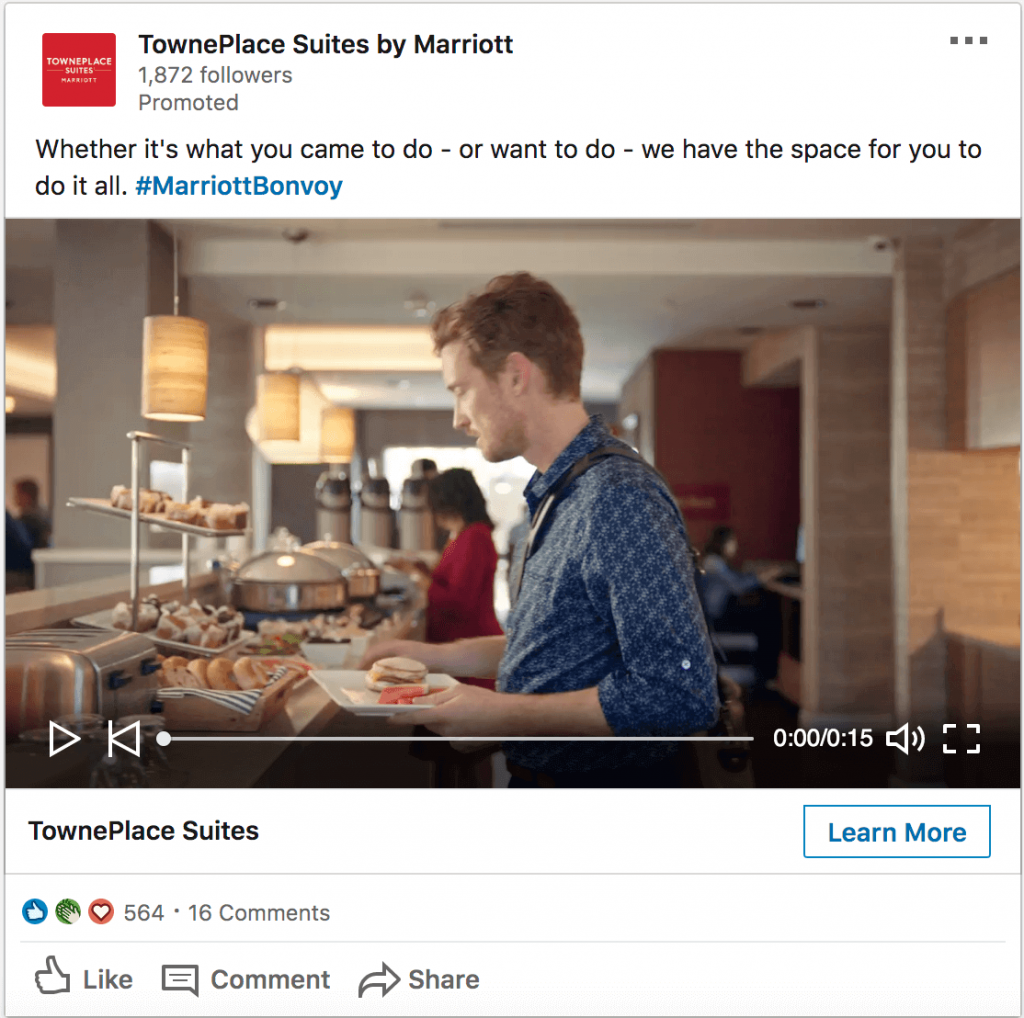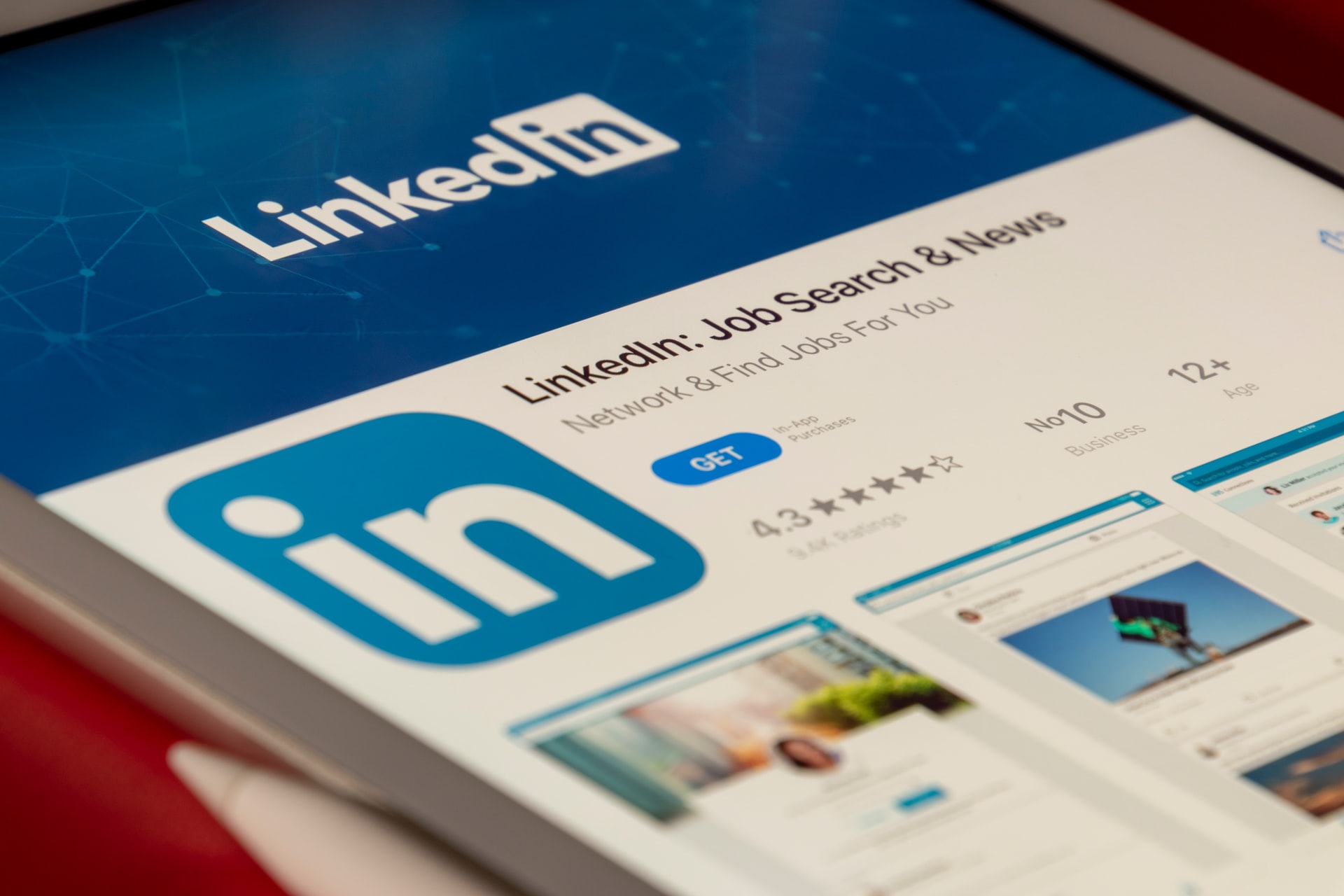When you run digital ads, you get a helluva lot of ad options to choose from. That’s the case for all major ad platforms, including Facebook, Google, and, of course, LinkedIn.
Now, every marketer knows that LinkedIn ads are a bit more expensive to run compared to ads on other platforms. That’s why, to save on money, you may find yourself wondering, “which LinkedIn ad option generates the best response?”
Well, that’s what we’re going to answer in this article. Let’s get into it.
First, what ad options does LinkedIn offer?

Before answering “which LinkedIn ad option generates the best response?”, let’s briefly go over the main types of ads you can run on the platform.
LinkedIn has four ad options you can use:
Sponsored content

These ads show up on the feed of your target audience on different platforms. They’re labelled as ‘promoted by LinkedIn’ so that users can make the difference between sponsored content and regular content.
Sponsored content ads come in different forms, which are carousel ads, single image ads and video ads. Keep this in mind as we’ll be going back to it later.
Sponsored messaging

As the name indicates, these ads show up directly in the inbox of your target audience. If you decide to go with these, keep in mind that LinkedIn limits the number of times a user can receive message ads within a short timeframe.
Text ads

These are shown on the top and right-hand side of LinkedIn’s desktop feed.
Dynamic ads

When they pop up on a member’s feeds, dynamic ads use the user’s personal details to display a personalised message. Keep in mind that many people think that these ads are invasive, and LinkedIn offers its users the option to hide their personal details.
Which LinkedIn ad option generates the best response?

Back in January 2022, Social Media Today, LLC ran a survey on LinkedIn to see which LinkedIn ad option works best for different brands. The survey got 410 responses, 42% of which indicated that single-image ads had been the highest performing ad option for their or their clients’ business. The runner-up option was video ads (32% of the responses), followed by sponsored text ads (15%).
Of course, considering that LinkedIn has over 830 million members worldwide at the moment, 400 responses are far from being a good sample size.
According to LinkedIn, compared to static posts, video ads generate twice the engagement, 3.5 times higher conversion rate, and are 20 times more likely to be shared by users on the platform. So, statistically speaking, video ads are the best performing ad option.
So, what can conclude from all of that?
Simply that LinkedIn users, like all social media users, are more likely to interact with visual ads rather than plain text ads. So, the answer to “which LinkedIn ad option generates the best response?” is visual content.
That said, there’s something to keep in mind here, which is that different ad options work for different target audiences. Depending on your campaign’s objective, you may find better results using text ads or sponsored messaging ads. So the key here is to test different options to find what works best for your brand.
That brings us to the next point, what makes visual ads so powerful and effective?
The importance of visuals in advertising
No matter which ad platform you’re using to reach your target audience, there’s no better way to do it than visual ads, and for good reason.
Visual content is appealing
Once you do enough research to paint your buyer persona, you’ll be able to tell what they’d like to see. Putting information into images or videos can help you send your messages across in a more relatable way, which can boost conversions and bring value to your brand.
It’s easier to grasp
These days, no matter where you look, there’s always new data to process and analyse.
Considering that the brain can only process so much, you have to be creative when it comes to reaching your audience and holding their attention long enough for your messages to go through.
Here’s something to consider regarding that: our eyes can register as many as 36,000 visual messages every hour. There’s no way our brains can process 36,000 words of written information within an hour. That’s why you ought to turn to visuals as a way to communicate as much information as fast as possible.
Visual content allows you to use the ad space to its fullest
“A picture is worth a thousand words.”
It’s cliché, but it’s true.
Images and videos tell stories way more efficiently than spoken or written words, all while using as little space as possible – something that’s crucial considering that we’re talking about LinkedIn advertising here. LinkedIn ads are relatively expensive to run and maintain, so you have to use your advertising real estate as efficiently as possible.
It boosts brand awareness
Images are vital when it comes to increasing brand awareness. That’s because they help your prospects better visualise your products and/or services. Furthermore, they help people build an affinity towards your brand faster, especially if you’re consistent with symbolism and strategic repetition (more on that later).
Which LinkedIn ad option generates the best response: Most effective visual strategies in advertising
If you want to reach your audiences effectively on LinkedIn, you need to use visuals strategically in your marketing. Here are the most effective visual strategies in advertising:
Use video ads

As mentioned above, video ads have higher engagement, and that’s according to LinkedIn themselves. The reason behind that is simple; videos combine movement and sound, both of which can catch the attention of social media users, which leads to higher engagement.
Not convinced?
Well, what if we told you that, according to Insivia, viewers retain 95% of information shared in a video format compared to merely 10% when it’s presented as a written text.
Considering all of that, it would be foolish not to at least try to integrate video ads into your marketing campaigns.
Use symbolism

A symbol is basically anything that stands in for something else. It can be something as simple as a colour or a shape or complicated, which is the case for patterns and rhythms.
You don’t have to explain every single detail when creating visual motifs and creatives. Sometimes, you have to let your work speak for itself. Other times, you can use symbols that your audience already understands (such as emojis with hidden messages).
Use consistent repetition
When building your brand’s identity, you ought to repeat motifs and symbols in different works over time. That way, you can give power to the symbols associated with your brand and convince your audience that your message is meant to be noticed.
Use colours wisely
Did you know that there’s something called colour psychology that you can use to convey different messages to your audience?
Colour psychology is the study of how different colours affect behaviours and perceptions. When it comes to advertising, colour psychology mainly focuses on how the customers’ impressions of a brand, product or ad can be influenced by using the right colours.
Here are some examples of how colour psychology is used in logos of big brands around the world:
- Red is associated with passion, intensity and excitation. Brands that use red in their colour to convey those messages: Red Bull, Coca Cola
- Orange is associated with creativity and joviality. Brands that use orange in their colour to convey those messages: Amazon, The Home Depot
- Green is associated with health, safety and growth. Brands that use green in their colour to convey those messages: Tropicana, Whole Foods
When creating the visuals for your ad campaigns, consider how you want a customer to feel when seeing the ad. Then, use different colours to influence your target audience based on what you want to achieve.
Which LinkedIn ad option generates the best response: LinkedIn ads best practices
LinkedIn ads are a powerful tool that can help users reach and build long-lasting relationships with audience members, but only if done right. Here’s how to run successful LinkedIn ads:
Keep it concise
When putting together a LinkedIn sponsored content ad, for example, it’s highly recommended to keep everything concise and on point.
For instance, your ad headlines should always be under 150 characters. Anything more than that can lead to bad engagement numbers due to a lack of interest. Your descriptive copy, on the other hand, should always be under 70 characters, short and simple.
Additionally, your call to action or CTA button should be clear and relevant to the ad at hand. That way, your audience knows how to act in their interest.
Mix it up
Mixing things up in your ads can mean a lot of things. For instance, instead of sharing industry news on your page, you can analyse it in depth. And once you have a clear-cut idea of the latest and greatest, transform it into something new and organic.
To put it shortly, your content should not feel generic to the average reader. In other words, your ads would help to establish you as a thought leader in your field and not just your average business. You should also credit any source of information you rely on to avoid coming off as someone who plagiarises everything.
Moreover, the content in your ad should be useful and relevant to your target audience. You should also incorporate visual media such as videos, images, and audio. Luckily for you, the Sponsored Content ad type already allows you to run video and image ads.
Always test

This point is perhaps the most important out of the bunch simply because it can help you determine which ad type is truly best for your campaign.
A/B testing, also known as split testing, allows you to test multiple versions of your ad against one another. The premise behind it is to basically try a different variation of your ad and see if it performs better than the original.
The changes you make to your ad should cover one component only (headline, CTA, image used, etc.). You could also tweak your target audiences in A/B testing instead of messing with the ad itself.
Which LinkedIn ad option generates the best response: Optimise
To make the best out of your LinkedIn ads, we recommend installing the LinkedIn Insight Tag on your website. It allows you to track conversions and can help enable demographic reporting for website visitors.
You should also make use of the Campaign Manager’s robust reporting capabilities to help identify your key metrics and put them to good use.
Lastly, if you want the ad type that you go with to crack the numbers, make sure to properly optimise your landing pages for a proper mobile experience.
Let us choose the right ad option for your brand
Choosing the right ad option for your business is no small feat. You have to run a lot of tests and analyse plenty of data points, and a lot of time and money can be wasted in the process. You needn’t worry, though, as we can do the heavy lifting for you. All you have to do is book a discovery call with us!



0 Comments